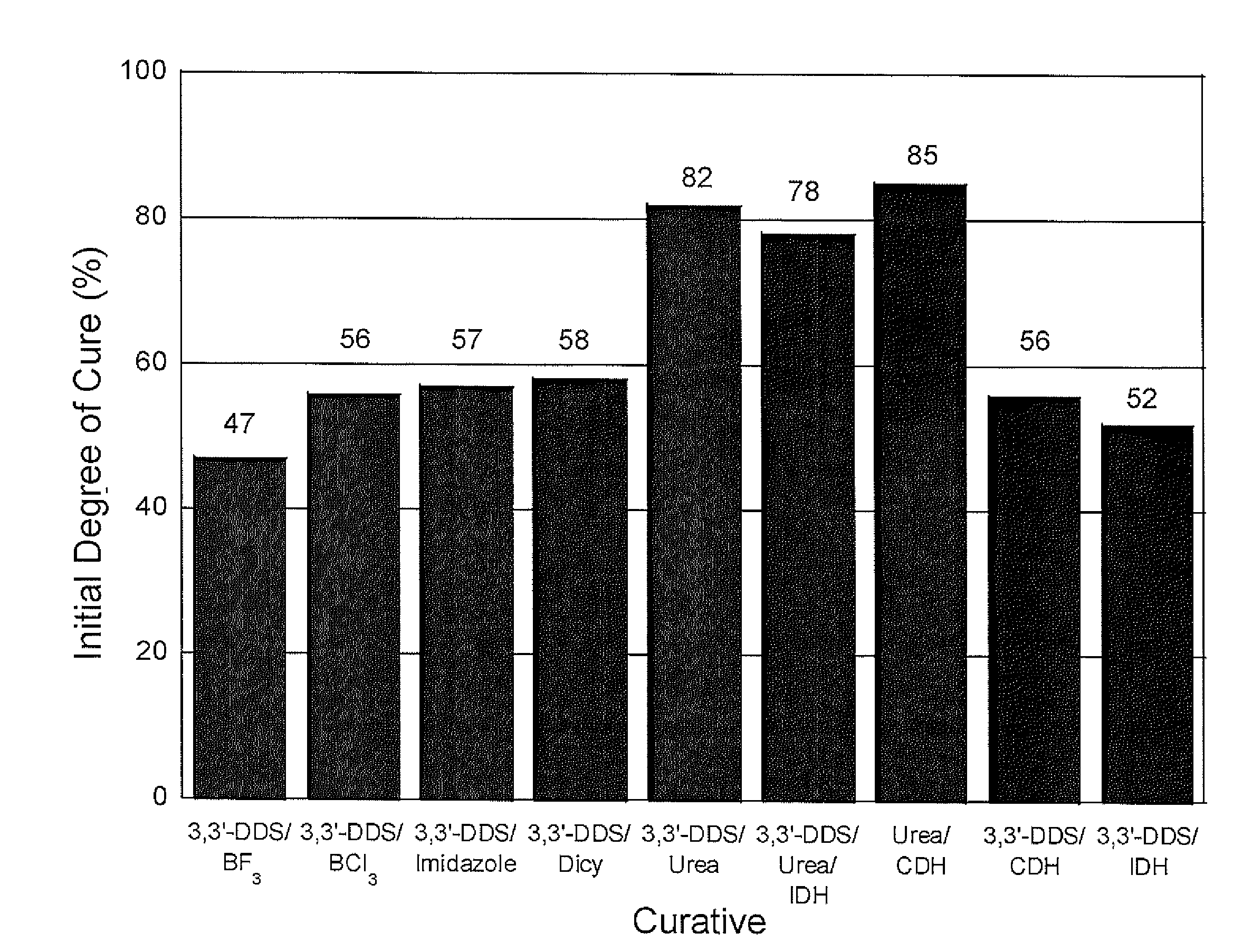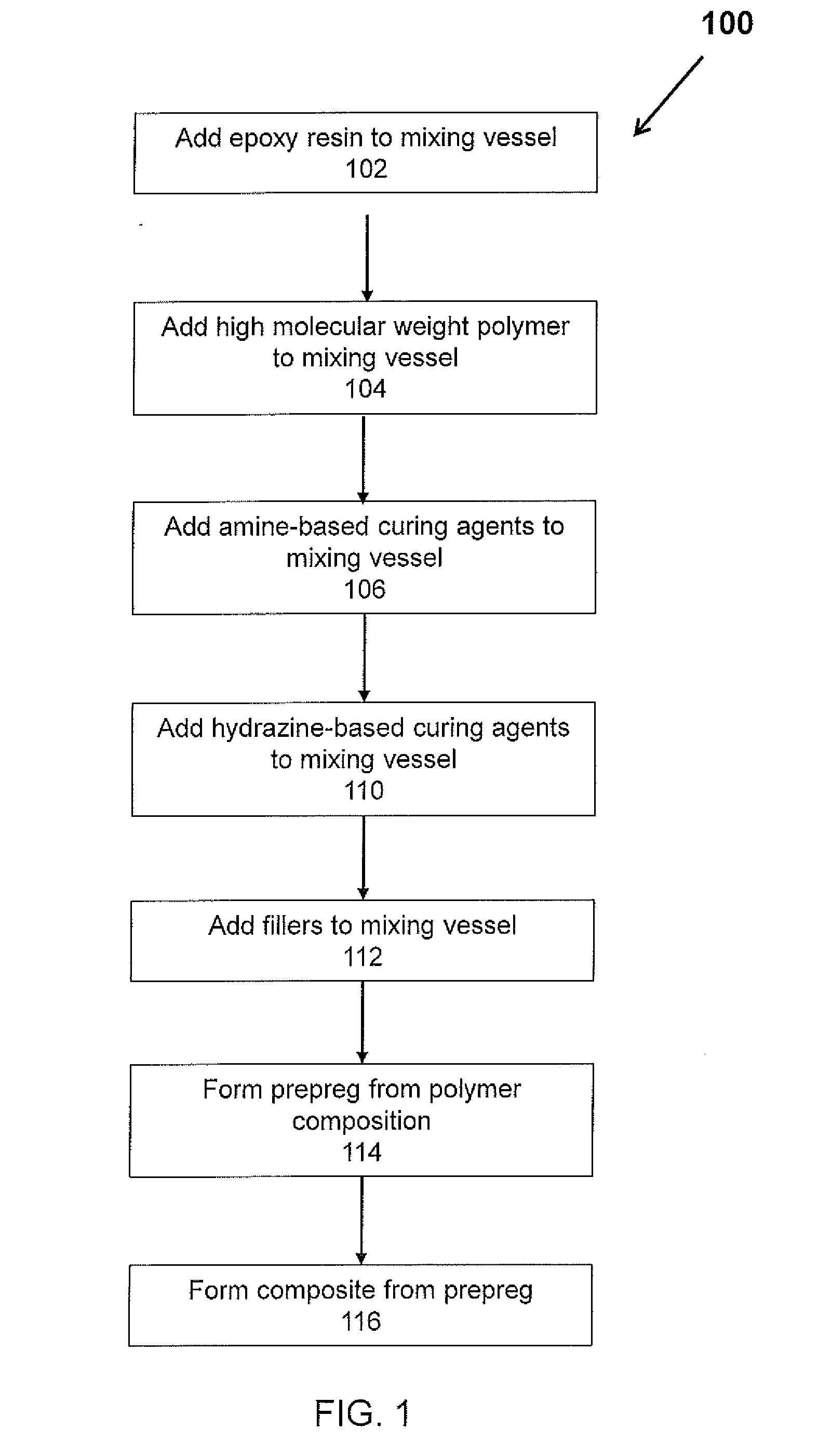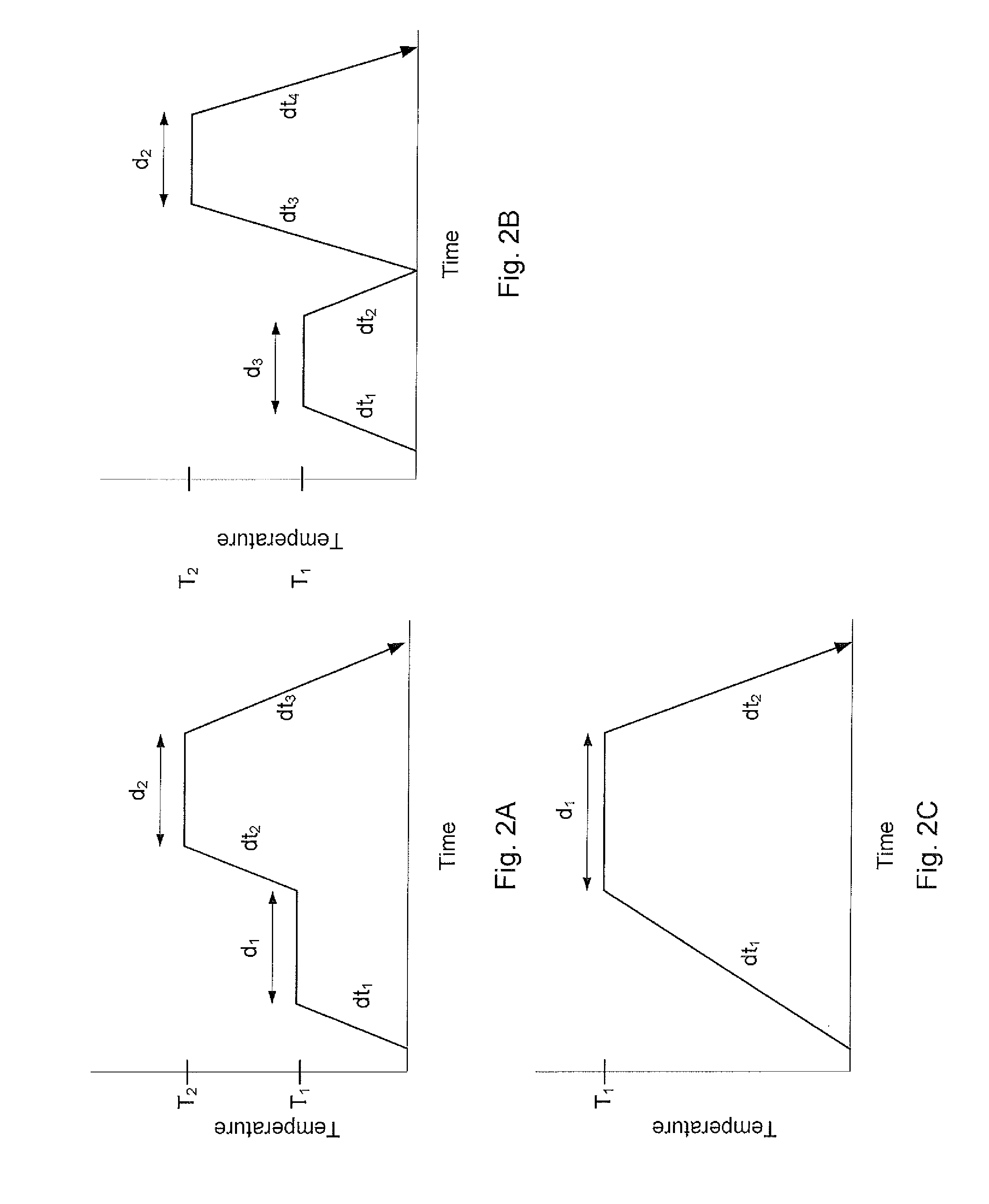Epoxy compositions with improved mechanical performance
a technology of epoxy polymer and mechanical performance, applied in the field of epoxy polymer compositions, can solve the problems of increasing the brittleness of the matrix, inhibiting the formation of voids, and reducing the mechanical properties of the resultant composi
- Summary
- Abstract
- Description
- Claims
- Application Information
AI Technical Summary
Benefits of technology
Problems solved by technology
Method used
Image
Examples
example 1
Composite Mechanical Performance of Hydrazine and Non-Hydrazine Epoxy Polymer Compositions
[0102]The mechanical performance of composites formed from epoxy polymer compositions comprising the novel hydrazide-amine curing systems agents of the present invention and curing agents or catalysts in combination with 3,3′-diamino diphenylsulfone (3,3′-DDS) not of the invention were compared.
[0103]Nine epoxy polymer compositions were evaluated in composites. Compositions 1-5 included 3,3′-DDS and one of BF3, BCl3, an imidazole, urea compound, and dicyandiamide, respectively, as curing agents. The BF3 comprised Anchor 1115 (Air Products), a liquid BF3 complexed with benzyl amine and isopropyl amine. The BCl3 comprised DY9577 or GY6010 / BCl3 amine complex (Huntsman Advanced Materials). The imidazole comprised 1-cyanoethyl-2-theyl-4-methyl-imidazole (Curamid CN, Poly Organix). The urea compound comprised toluene bisdimethyl urea (CA-150, Cytec Industries), and the dicyandiamide comprised Amicure...
example 2
Tack Life
[0126]The tack life of epoxy polymer compositions comprising the novel curing agents of the present invention were compared with that of other curing agents. The performance of each prepreg composition was characterized through tack life measurements and degree of cure measurements. As discussed below, the prepreg of polymer compositions comprising hydrazine-amine curing systems of the present invention exhibited a significant degree of cure at low temperature while concurrently preserving good tack life as compared to prepreg of the other compositions investigated.
[0127]Six compositions were evaluated. Compositions 9-12 included 3,3′-DDS alone or in combination with one of BF3, BCl3, and dicy as curing agents. The BF3 comprised Anchor 1115, while the BCl3 comprised DY9577 or GY6010 / BCl3 and the dicyandiamide comprised Amicure CG-1400. Compositions 13-14 included 3,3′-DDS in combination with IDH and CDH, respectively, as curing agents.
[0128]Each of the compositions evaluate...
example 3
Mechanical Performance of Carbodihydrazide (CDH) Containing Hydrazine-Amine Curing System Compositions as a Function of Stoichiometry Level
[0137]Having established the utility of the hydrazine-amine curing systems disclosed herein for use in epoxy polymer compositions, further investigations were performed to evaluate the effect of the hydrazine stoichiometry. The performance of four CDH containing epoxy polymer compositions was characterized through degree of cure measurements and mechanical property measurements (OHC and Tg-wet), as discussed above.
[0138]The four compositions each contained 3,3′-DDS and CDH as hydrazine-amine curing system, in varying stoichiometry levels, with the total stoichiometry level kept constant at about 80%. CDH stoichiometry levels examined were about 7, 10, 20, and 40%.
[0139]Each of the compositions evaluated contained two epoxies and a substantially soluble thermoplastic toughening agent. The epoxy resins comprised tetraglycidyl diamino diphenylmethan...
PUM
| Property | Measurement | Unit |
|---|---|---|
| Temperature | aaaaa | aaaaa |
| Fraction | aaaaa | aaaaa |
| Fraction | aaaaa | aaaaa |
Abstract
Description
Claims
Application Information
 Login to View More
Login to View More - R&D
- Intellectual Property
- Life Sciences
- Materials
- Tech Scout
- Unparalleled Data Quality
- Higher Quality Content
- 60% Fewer Hallucinations
Browse by: Latest US Patents, China's latest patents, Technical Efficacy Thesaurus, Application Domain, Technology Topic, Popular Technical Reports.
© 2025 PatSnap. All rights reserved.Legal|Privacy policy|Modern Slavery Act Transparency Statement|Sitemap|About US| Contact US: help@patsnap.com



